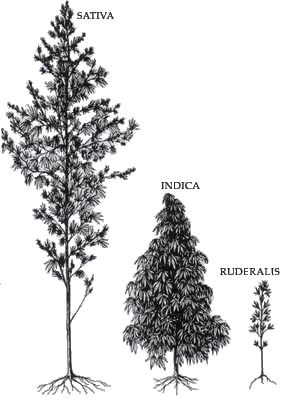Yes, you can't control for sunlight, but you can be a Smart Person™ and know to plant in the early spring, so that you maximize sun exposure for your precious baby plant. Then when summer rolls around and the days are the longest of the year, you know junior will grow very big, bigger and stronger than he ever would indoors, because no grow lamp on earth can match the intensity of a long hot summer day.
Here's what High Times says:
And
here's a review from a Portland, OR newsmag on an outdoor strain grown in S. Oregon that tested at 24.1% THC!

Yowza!
You can't control rain, but you can be a Smart Person™ and check the weather very frequently, like I'm sure any other farmer-type individual does. Often times, especially if you grow in pots (heh) you can simply move them to an enclosure like a car port or any structure with a tarp or clear plastic stretched over it. Something simple like this would do the trick:
Those last two photos were taken from
this fun article about an outdoor grower in Port Angeles, WA, which is as cold and rainy as any a place in the pacific northwest. In spite of that, he still apparently produces good enough stuff to beat indoor grown buds in cannabis competitions, so there's that.
More to the point, many climates have little or no rain at all during the summer months, so often there isn't much to worry about anyway.
You won't need to worry about shooting bees, as a Smart Person™ because
they have nothing to do with pollination of marijuana. All known strains of cannabis are wind-pollinated, so you just need to make sure your grow site is not within a certain distance of male plants, like you might find at an industrial hemp farm. And of course, you also need to kill off any male plants that might be in your garden, which can also appear indoors.
Indeed. Thank the gods, nature, and Al Gore for the Internet.
Back to your earlier comments about how you think outdoor cannabis is a bunch o' crap. Do you think it's really feasible for everyone currently smoking weed to only smoke indoor grown stuff? Me personally, I think our power grid would keel over before that came even close to happening.

 Yowza!
Yowza!





